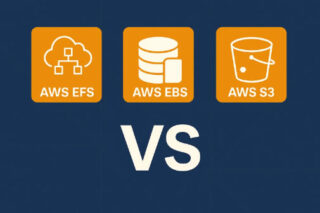Managing large amounts of data stored in Amazon S3 can prove to be a challenge. One of the frequently performed tasks is locating the most recently updated object in an S3 bucket. This guide will demonstrate how to retrieve the last modified object from S3 using the AWS Command Line Interface (AWS CLI).
This guide is designed for AWS users who possess a basic understanding of S3 and object storage. We will walk you through the process of using the AWS CLI to find the last modified object in your S3 bucket.
Getting Started with the AWS CLI
To get started, you’ll need to have the AWS CLI installed on your computer. If you don’t have the AWS CLI installed, you can follow these instructions to install it on your system.
Once you have the AWS CLI installed, you’ll need to configure it with your AWS credentials. To configure the AWS CLI, you’ll need to use the aws configure command and provide your AWS access key and secret key.
S3 is a highly scalable and durable object storage service with a number of features that make it ideal for data storage and retrieval. S3 allows you to store data in a secure, highly available, and durable manner, and it offers a variety of data management tools, including the AWS Command Line Interface.
Getting the Last Modified Object from S3
Now that you have the AWS CLI configured, you’re ready to get the last modified object from S3. To get the last modified object from S3, you’ll need to use the aws s3 ls command. The aws s3 ls command is used to list the contents of an S3 bucket.
To get the last modified object from S3, you’ll need to run the following command:
aws s3 ls s3://bucket-name --recursive | sort | tail -n 1
The aws s3 ls command is used to list the contents of the S3 bucket named bucket-name. The –recursive option is used to recursively list the contents of the S3 bucket, which means that it will list all objects in the bucket and any subdirectories within the bucket.
The sort command is used to sort the output of the aws s3 ls command by the date the objects were last modified. Finally, the tail -n 1 command is used to display the last line of the output, which is the last modified object in the S3 bucket.
Using Filters to Get the Last Modified Object from S3
In some cases, you may want to use filters to get the last modified object from S3 that has a specific extension or that was last modified within a specific date range.
To use filters with the aws s3 ls command, you’ll need to use the –filter option. The –filter option allows you to use a filter expression to filter the output of the aws s3 ls command.
Here’s an example of using filters to get the last modified object from S3 that has a .txt extension:
aws s3 ls s3://bucket-name --recursive --filter "*.txt" | sort | tail -n 1
FAQs
Q: Can I get the last modified object from S3 using the AWS Management Console
A: Yes, you can retrieve the most recently modified object from S3 via the AWS Management Console. To do so, log into AWS, navigate to the S3 service, and select the S3 bucket from which you want to retrieve the most recently modified object. The objects in the bucket can then be sorted by date modified, with the most recently modified object at the top of the list.
Q: Can I get the last modified object from S3 using the AWS SDKs?
A: Yes, you can get the most recently modified object from S3 using the AWS SDKs. It serve as a programming interface to AWS services such as S3. Using the AWS SDKs, you can write code in your preferred programming language to retrieve the most recently modified object from S3.
Q: Can I get more information about the object I get using the AWS CLI?
A: Yes, you can get more information about the object you get using the AWS CLI. To get more information about the object, you can use the aws s3api head-object command. The aws s3api head-object command is used to get metadata about an S3 object. You can use the aws s3api head-object command in conjunction with the aws s3 ls command to get more information about the last modified object from S3.
Conclusion:
Getting the last modified object from S3 using the AWS CLI is a straightforward process. By using the aws s3 ls and the sort and tail commands, you can quickly get the last modified object from S3. If you need to use filters, you can use the –filter option with the aws s3 ls command to filter the output. Additionally, if you need more information about the object, you can use the aws s3api head-object command.


